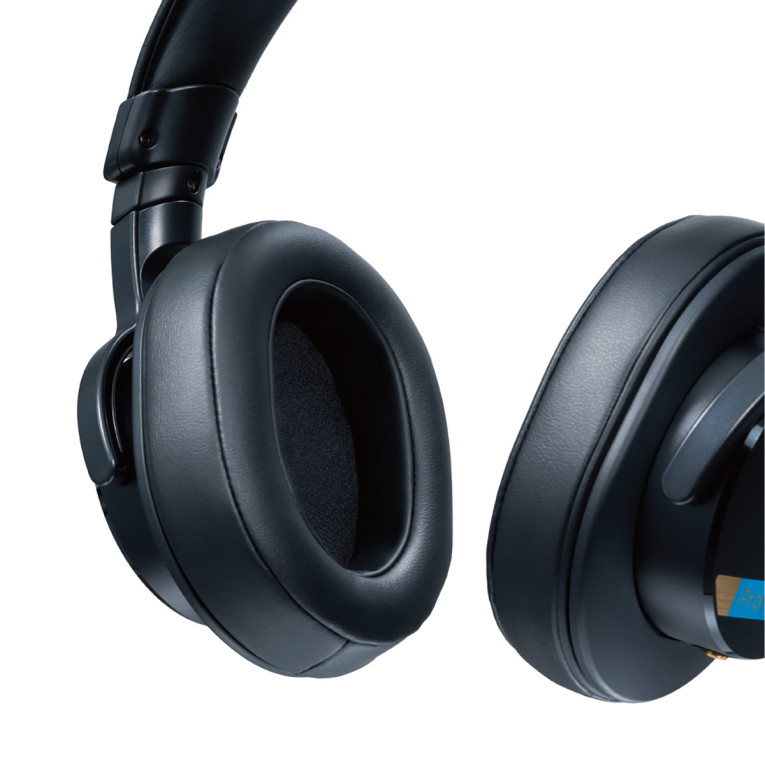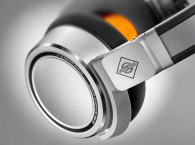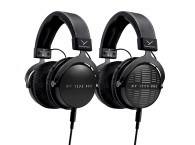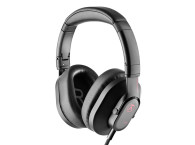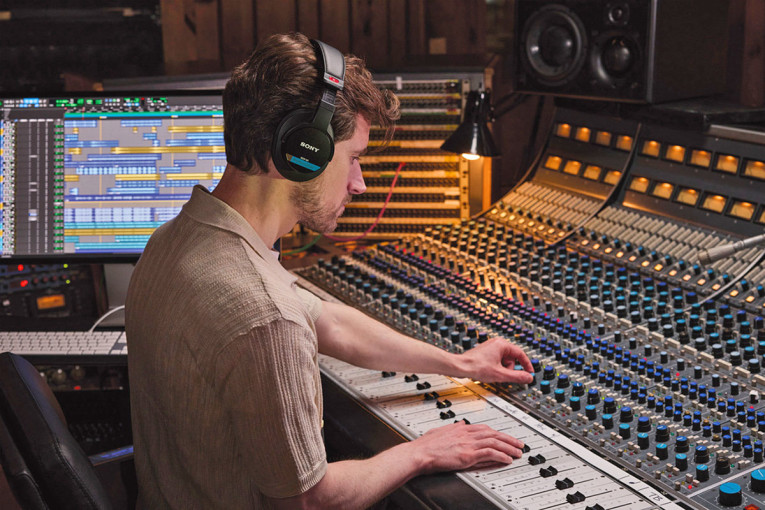
Designed for professional applications, the MDR-M1 design had to be able to deliver in studio environments, where its closed acoustic structure helps eliminate ambient noise and sound leakage. That challenge is also supported with the use of carefully designed ear pads for sound isolation. But close-back headphones are challenging when targeting a balanced frequency response as associated with reference monitoring. Sony tackled that challenge in multiple fronts.
Starting with newly developed 40mm dynamic drivers, with diaphragms that are able to reproduce very low frequencies (down to the claimed 5Hz), and all the way up to very high frequencies. Sony says this was achieved in the MDR-M1 through a combination of a soft edge shape to reproduce low frequencies with sufficient volume and low distortion, and a hard dome shape to accurately reproduce ultra-high frequencies. With 50Ω impedance at 1kHz, 102dB/mW sensitivity and 1,500 mW (IEC) maximum input, the Sony MDR-M1 headphones are also easy to drive and ideal to complement any type of professional or prosumer equipment.
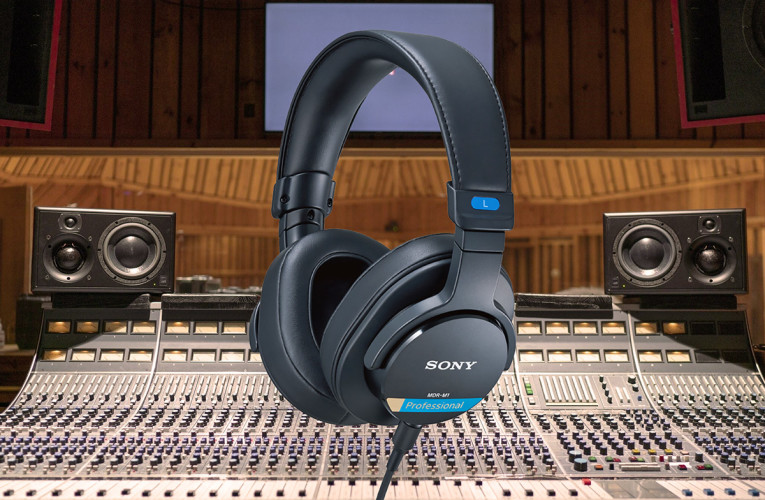
Another particular aspect of the MDR-M1 design is its tuned port (Beat Response Control), which acts as a ventilation hole to control low frequencies. By optimizing the operation of the diaphragm, Sony says this venting, which can be open or closed by the user, improves low-frequency transient characteristics and helps generate a tighter bass response. Fine tuning of MDR-M1 prototypes involved an extensive industry collaboration with recording studios including the famous Power Station at Berklee NYC and mix and mastering engineer, Mike Piacentini, from Sony’s Flagship Mastering facility, Battery Studios NYC.
The result, Sony says, delivers a new studio reference for professionals and non-professional users, with a clear, high-resolution and well-balanced sound, capable of expressing the details of various sound sources. So precise, that Sony says the MDR-M1 headphones are able to offer accurate sound localization to correctly determine the distance of the sound recorded by the microphone.
Another remarkable aspect in the MDR-M1, is that Sony created these new reference headphones without deviating much from the familiar earcups shape and overall design of its most recognized headphones. This is effectively the result of using a research database of head shapes and sizes to determine the most appropriate earpads and headband shape. And all this, while keeping the price affordable (which is not always the case in Sony headphones).

Sony also leveraged the company’s long experience of headphone design, to ensure all-day comfort, as required by professional users. The MDR-M1 headphones are extremely lightweight (approx. 216g) and are complemented with replaceable earpads and two detachable cables (one longer and one shorter) with machined aluminum connectors, again as required for professional use. The connection is detachable with a screw system, allowing for secure connection and cable replacement. Sony includes headphones cable(1.2m/2.5 m)and 3.5mm mini jack to 1/4” plug adaptor.
Users of the MDR-7506 and other Sony headphones will recognize the familiar red/blue L/R marks, clearly visible on each side, and the much welcomed swivel structure for compact storage. No doubt that the MDR-M1 headphones match the standards that Sony’s advanced Professional Audio products have delivered throughout the years. And with an MSRP of $249.99 USD, there is no reason to doubt that these will be a strong contender in a highly disputed market.
www.sony.com
